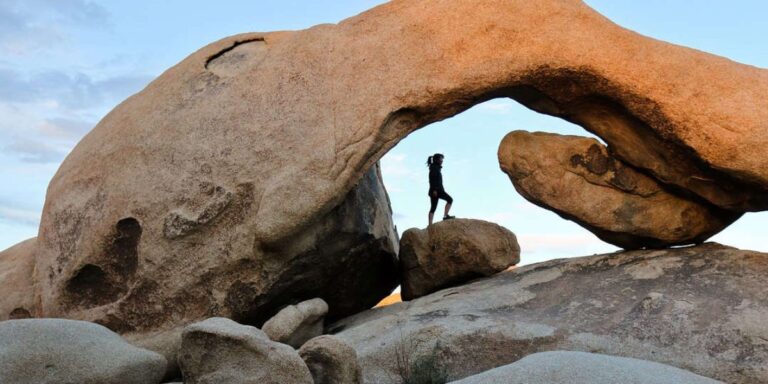Joshua Tree National Park is like something from a children’s book with its Dr. Seuss-like Joshua trees and nearly lunar environment of enormous granite boulders and rolling slopes. People frequently use words like mystical or spiritual to express their feelings toward this area.
The most well-liked activities here include strolling or trekking amid the trees, scaling the enormous rock faces, camping under the stars, taking pictures of the scenery, or just taking in the peace and quiet of the desert.
The park, which is located where the Colorado and Mojave Deserts converge, has a diverse topography with drastically varying features and vegetation depending on elevation. As far as the eye can view, some regions are covered in mature Joshua trees, while others are entirely devoid of them yet nevertheless have their own special beauty.
Best Places to Visit in Joshua Tree
See our list of activities to do in Joshua Tree National Park to help you organize your trip.
1. Hidden Valley Nature Trail & Day Use Area
One of Joshua’s most picturesque and convenient regions is the Hidden Valley area. It’s ideal whether you want to take a quick hike or just stroll through the woods and rock formations.
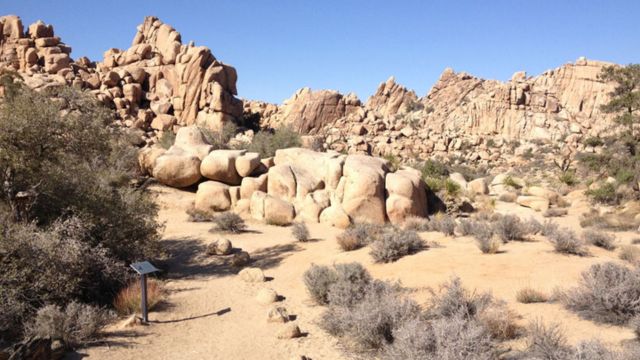
The Hidden Valley Nature Trail is a pleasant one-mile circle that leads into a sizable bowl surrounded by granite walls through an opening. It’s said that cattle rustlers originally frequented Hidden Valley because of its terrain, herding the animals there to hide them.
One of the most well-liked walks in Joshua Tree National Park is this one since it’s a reasonably simple and beautiful trail. There aren’t many Joshua trees there. The Great Burrito, a massive monolith that is a well-liked climbing location in the park, can be seen on this walk.
2. View of Keys: Coachella Valley
A lookout point at a height of more than 5,000 feet with expansive views of the Coachella Valley, Keys View is definitely worth the trip.

The Salton Sea, Palm Springs, the San Andreas fault line, and, on a clear day, Mexico are all visible in the distance. The view is amazing in clear weather, and it’s a terrific opportunity to get familiar with the terrain in the area.
See More:
- Explore the 10 Best Attractive Places to Visit in Central Florida, USA!
- Top 10 Best Iconic Places to Visit in Central Park – Must Visit Place For You!
- Top 10 Best Dramatic Places to Visit in Rocky Mountain National Park: Explore the Hopes!
The elevation changes, the temperature notably drops, and the scenery completely changes as you travel up here.
3. Nature Trail near Barker Dam
The 1.3-mile circular route at Barker Dam is another short walking path. This is your best option if you only want to take a quick route in Joshua Tree because it has large Joshua trees, boulders, and a body of water that frequently draws birds.
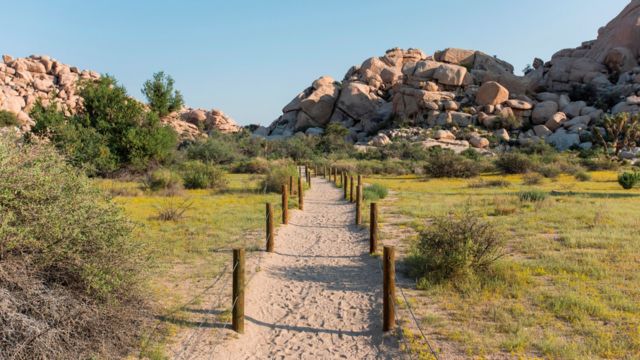
The remains of a water tank left behind by former local cattle ranchers can be found near the far end of the circle. Many people enter the area and then turn around to leave by the same path, although this is incorrect. Even if it could be a little shorter, it is still worthwhile to continue because the loop beyond the dam has some of the prettiest views and the biggest trees.
4. Garden of Cholla Cactus
With over a thousand closely clustered chollas spreading out across the desert floor, the Cholla Cactus Garden is perhaps one of the park’s most magnificent sights for nature lovers. In contrast to how chollas are typically mixed up with other desert plants, they are the lone cactus in this natural garden.

The distant mountains make the ideal backdrop as the backlit needles virtually shine in the early morning or late afternoon sun. You can easily navigate this wonderful location on a level walking path.
Beyond the campgrounds at Belle and White Tank, on the way to Cottonwood Spring, is the Cholla Cactus Garden.
5. Skull Rock
Skull Rock is maybe the best place in the park to see the nearly comic book-like terrain in detail. In the park’s dominant rock formations, you may discern faces and other images, but at Skull Rock, all you need to see is the outline of a skull protruding from the boulder-strewn debris. This enormous, organically shaped rock, which is directly next to the road, never fails to catch attention.
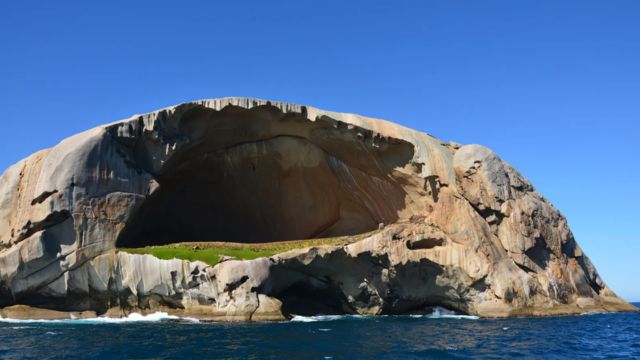
The panorama of undulating rock heaps surrounding this wayside stop is fascinating and ideal for trekking or light scrambling. Although there are still some routes in the region, many visitors just stroll around, stopping to rest, discover vantage places for lookouts, or sunbathe on the rock slabs.
6. Bouldering and Rock Climbing
One glance at the scenery will explain why climbing and bouldering are two of the park’s most well-liked pastimes. Around 8,000 climbing routes and hundreds of climbing formations can be found at Joshua Tree. The visitor centers offer maps and informational brochures.

Climbers frequently visit Joshua Tree National Park, especially in the winter when Yosemite and other fantastic climbing locations farther north are closed. Although climbers often assemble in numerous areas, the Hidden Valley region and other surrounding locations at the park’s western end are the main hubs.
7. Ryan Mountain Hike
The trek up Ryan Mountain appears to be quite difficult and unspectacular from Park Boulevard, but the reward is in the 360-degree vistas of the park that await at the summit. This three-mile, 1,000-foot elevation rise, up-and-down climb is rather taxing.
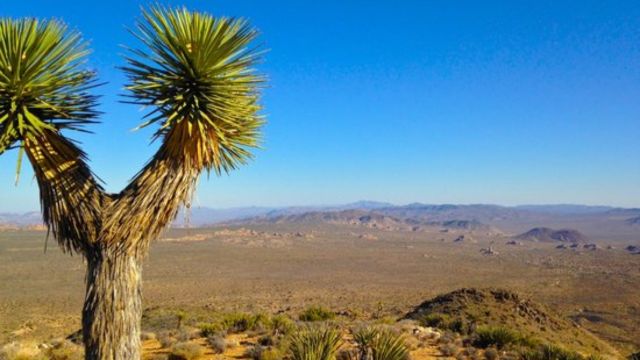
As it ascends a desolate slope, the open trail gives little to no cover and is not particularly interesting, but the amazing vista from the peak, at 5,457 feet, makes the effort worthwhile.
8. Keys Ranch (Tour Guided)
The ruins of Keys Ranch, the historic homestead and ranch of William F. Keys, who moved into this area in the 1910s, are located in a location that few individuals would describe as welcoming.
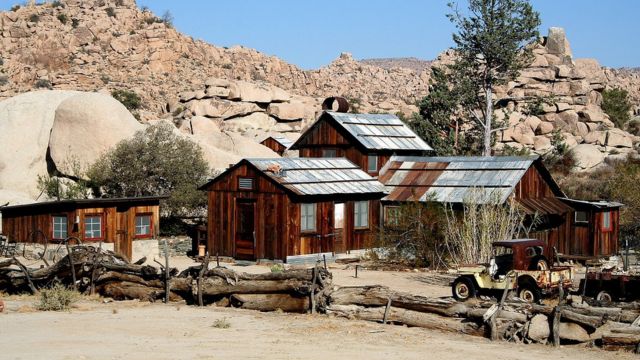
The house, schoolhouse, store, and workshop are all on the property, which is a National Historic Register Site and is only accessible through ranger-led guided tours. The winter and early spring see a seasonal series of these tours.
See More:
- Top 10 Best Beautiful Places to Visit in Glacier National Park – Surely Enhance Your Happiness!
- Get Ready for the Top 10 Best High-Rated Places to Visit in Olympic National Park!
The tours are quite educational and give insight into Keys, who was quite a character, as well as the difficulties the family experienced and the creativity needed to survive out here. For details on tour dates and times, see the park website.
9. Oasis of Cottonwood Spring
A persistent spring, uncommon in the desert, can be found in Cottonwood Spring Oasis. Despite the fact that the flow changes, it is currently 500 gallons each day.
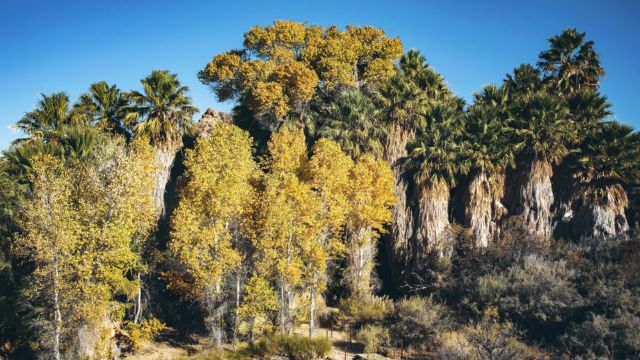
The spring was first used by the local Cahuilla Indians, miners, and prospectors many years ago after an earthquake brought it to life. Old gold refining machinery and some concrete remnants are still visible.
One of the best spots in the park for birding is Cottonwood Spring. Birds and other creatures are attracted to the region by the steady supply of water, shade, and trees. Gambel’s Quail, hummingbirds, bushtits, and the titmouse with its conical crown should all be observed closely.
10. Trail of Arch Rock
Without much effort, the Arch Rock Trail rewards hikers with beautiful surroundings. The lollipop track, which is only 1.4 miles long, guarantees that you will view the new landscape for the majority of your journey. You’ll reach the arch after traveling about halfway along the trek.

The arch may not seem particularly impressive to hikers who have visited other national parks, such as Arches in Utah, but its location within a region of oddly shaped rocks more than makes up for its small size. One of the more well-liked treks in the park, the track is simple and barely rises 100 feet from beginning to end.
Conclusion
One of the most popular national parks in California is Joshua Tree National Park, which is situated at the confluence of the Mojave and Colorado deserts. Every year, it receives more than 2 million visitors. Huge boulders, various rock formations, and an astounding variety of desert plants and animals are Joshua Tree National Park’s principal draws.
Since it was initially proclaimed as a national monument in 1936 and later as a national park in 1994, it has been a protected area. The park is also recognized by UNESCO as a biosphere reserve. It covers a total area of 1,235 square miles, of which 671 square miles are designated as wilderness.
| Official Portal | https://directorateheuk.org/ |

